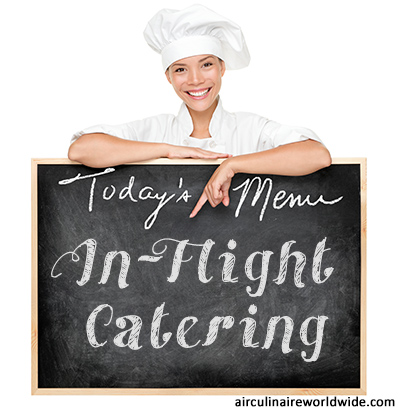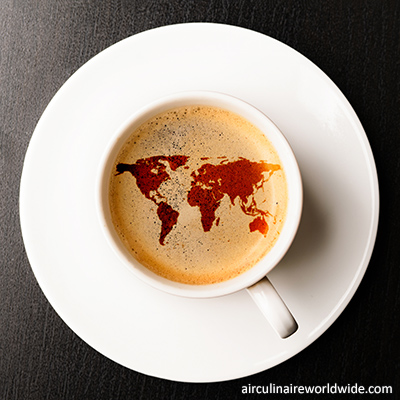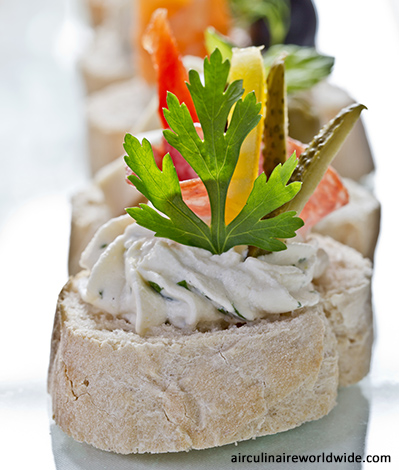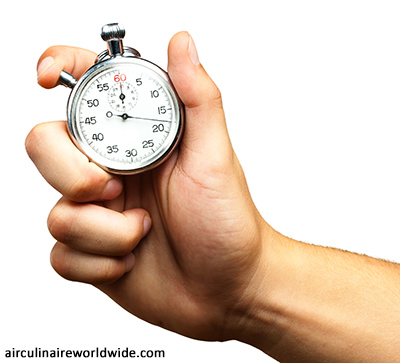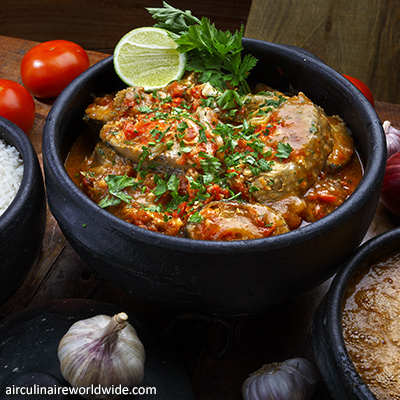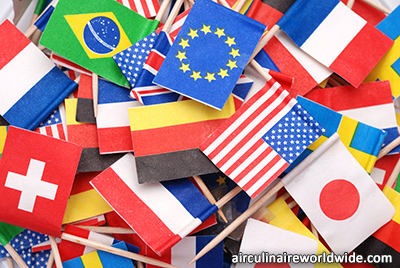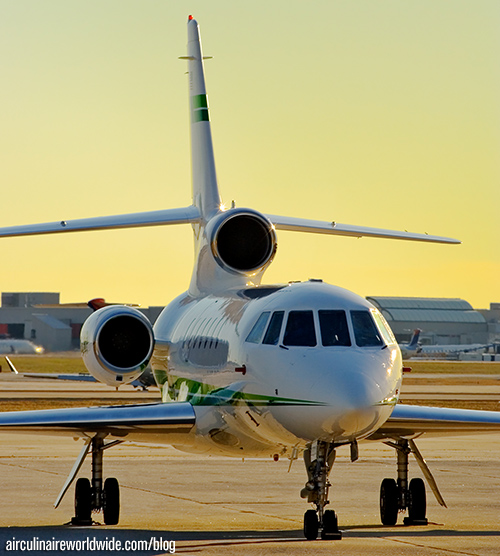Ever wonder what it would feel like to be part of a cooking competition? With short notice and extreme skill sets, chefs specializing in private aviation catering feel this type of pressure everyday. It is not unusual to be making both a ham sandwich and a freshly prepared Cordon Bleu for a passenger order. How is this accomplished? The steps are well defined and rely heavily on the information provided to the chef, the culinary prowess of the kitchen, cooks and others that arecharged with insuring the items you ordered are exactly as you desire.
Private aviation catering is full of possibilities when given sufficient notice, an understanding of capabilities at international locations and willingness to be flexible when needed. The aircraft may be on schedule and everything else may be perfect, but in order for the entire trip to be considered a success by your passengers the catering has to meet their expectations. To help the trip be a success, take time to communicating with in-flight caterers, your ground handler or third-party provider. Here are some of the most important pieces of information to consider which will make your in-flight catering a hit.
When communicating your catering needs, be certain to provide vital information, including: the date, airport code, tail number, local delivery time (with ample room before the departure time), and delivery location (FBO or directly to aircraft). Your in-flight caterer will need to know the number of passengers on-board, if the flight is for a business of personal trip, age of any children and dietary restrictions including food allergies. The departure time and duration of the flight will have a big impact on the appropriate type of catering choices. Plate-ready catering is better for short flights, whereas bulk packaging is better suited for longer flights with a flight attendant at the culinary helm. Providing extra details, particularly regarding galley specifications and re-heating capabilities, will allow for a more customized catering experience.
It is important to note that several items are only available in certain areas or at certain times. Items, such as wines, that are produced in limited quantities may not be available where you are traveling to. The same is true for specific produce, such as fiddlehead ferns, which may be out of season or not available in the region. Working closely with your caterer should enable you to offer acceptable alternatives to your passengers.
The “Culinary World” has changed. Gone are the days of the food service industry trying to have everything available everywhere. Instead, there is far greater focus on food that is locally grown, processed and procured. This localization means that menus can be customized around what is freshest in a given location. As always, it’s best to get recommendations from your aviation caterer that will afford the best outcome for your passengers. An in-flight catering specialist staffed by some of the most experienced chefs in the industry can help you decide what to pair with the discerning tastes of your VIP passenger.
In larger markets, in-flight caterers can accommodate just about any request or revision with sufficient notice. Some larger in-flight caterers even have specialty shoppers to find those “concierge” items that you might need in addition to your catering order. Laundry, ware-washing and even international trash removal is available in some of the larger “gateway” kitchens that typically serve international flights. Another option is menu planning.
Just as your schedule will change, so may your catering. Changes, modifications or even moving up the delivery time is just part of the norm in business aviation catering. If you have any last minute catering, the best thing to do is be flexible. Your in-flight caterer will do whatever is in their power to accommodate the request, but in the end, we are governed by the processes that dictate Food Safety.
Just as in the cooking show, the end result should be creative flavorful food that is individually made – order by order, item by item. Sure, the chef’s coat might not be as clean as when they started the day, but the sauce smudges and splatters are worn as badges of honor to their physical and mental prowess to create great flavorful food. Tomorrow is a new day, a fresh chef’s coat awaits and the “Culinary Competition” begins anew. Once again, the chefs will utilize all of their team’s skill sets to exceed the expectations of the customer, whether crew or passenger.
Questions?
If you have any questions about inflight catering, contact weborders@airculinaire.com.
